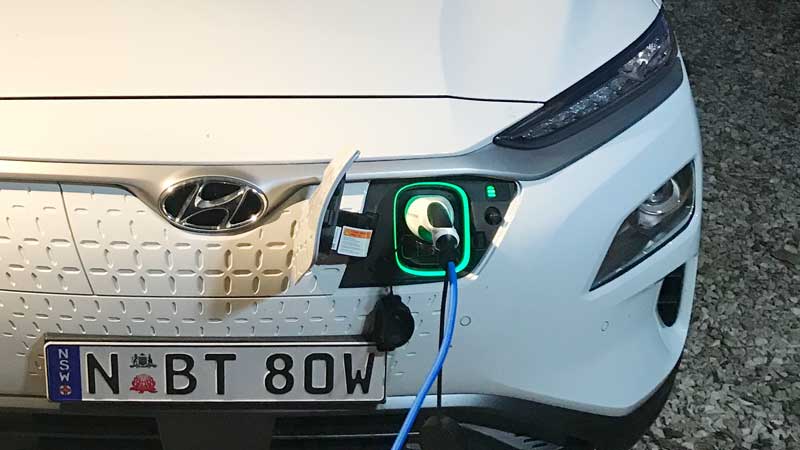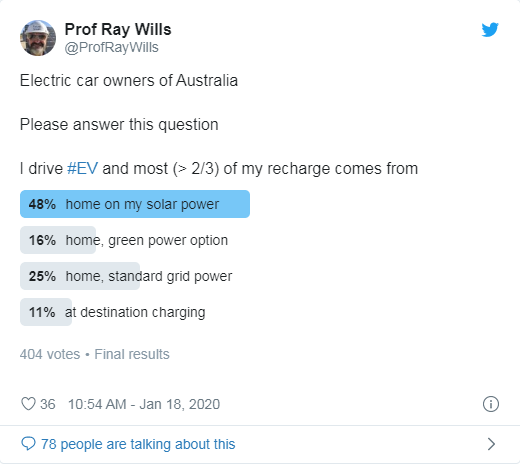A whopping 75% of electric cars in Australia are charged almost exclusively with renewable power, according to an informal poll conducted by Future Smart Strategies managing director and electric vehicle advocate Professor Ray Wills.

The poll was carried out on social media channel Twitter on Monday and answered by more than 400 drivers representing approximately 5% of the entire EV fleet in Australia.
In it, Wills asked respondents if most (ie, more than two-thirds) of their EV charging came from either residential rooftop solar, green power paid for as a residential electricity option, standard grid power mix at home, or at destination charging (taken to include both AC and DC, not at home).
The results of the poll are illuminating, and given the sample size may be taken as a fair indication of how drivers are currently recharging electric vehicles (EVs) in Australia.
It shows that currently, a little less than 90% of the time, EVs are mostly charged at home and of that charging, more than half is done with energy generated from rooftop solar.
A further 16% use a green power option, 25% standard grid mix (this can include some renewables). 11% cited mostly using AC/DC destination charging.

“Results are not surprising, but nice to have confirmed,” noted Wills in a thread following the poll.
Adding together solar power, green power and destination charging (DC chargers in Australia source an estimated 90% of power from renewables), Wills says the poll shows that 75% of EV charging sources power from at least 66% renewable sources.
Even drivers who are charging at home off a standard grid mix have the advantage of accessing a certain percentage of renewables.
Tasmania now sources an impressive 94% of its power from renewables (mostly hydro), while in South Australia, home of the soon-to-be expanded Tesla big battery at Hornsdale, more than half of all power is generated from renewable sources.
While other states are still reliant largely from non-renewable resources, the overall grid mix is now more than 20% renewable.
Wills’ poll does not drill down into who is charging what by state, but it is known that most electric vehicles are owned in Queensland, NSW and Victoria – the three poorest performers when it comes to renewable energy sources.
“For home charging on a standard contract, those EV owners likely charging on a average of 20% renewables over a year,” said Wills in a note by email.
Opponents of electric cars often cite the spurious argument that there is no positive impact for the climate if electric cars are simply charged off a coal-powered grid.
While this is wildly incorrect (the reduction in vibration due to simpler drivetrain means far less wasted energy loss), it is also important to note that we live in a time of change in the grid mix with renewables increasingly coming to the fore particularly in Tasmania and South Australia.
A recent study by Harvard University researcher Ryan Cornell showed that even on 20% renewable grid mix, the carbon emissions from an EV are some 40% less than an internal combustion engine (ICE) vehicle.
Which brings into focus the State of EVs in Australia 2019 report by the Electric Vehicle Council which asked not just current EV drivers, but 1939 consumers in general most of which do not own an EV, how they would source electricity to power electric vehicles.
In that survey, 51% of respondents answered from renewable resources, 22% were not concerned about the source of their electricity and 26% said they did not know.
Considered against the results of Will’s poll, this suggests that regardless of a given state’s grid mix, half all drivers by and large intend to charge off renewables once they do buy an EV, that most of that will be from rooftop solar – and that EV owners are already carrying through with this intention.